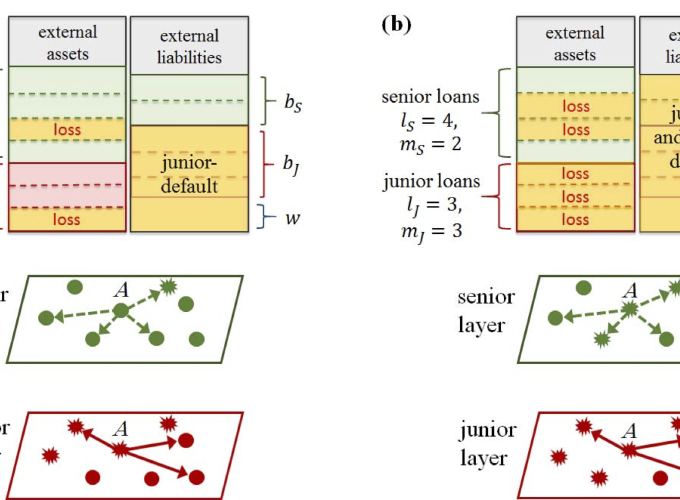Cascades in multiplex financial networks with debts of different seniority

Cascades in multiplex financial networks with debts of different seniority
Abstract
The seniority of debt, which determines the order in which a bankrupt institution repays its debts, is an important and sometimes contentious feature of financial crises, yet its impact on systemwide stability is not well understood. We capture seniority of debt in a multiplex network, a graph of nodes connected by multiple types of edges. Here an edge between banks denotes a debt contract of a certain level of seniority. Next we study cascading default. There exist multiple kinds of bankruptcy, indexed by the highest level of seniority at which a bank cannot repay all its debts. Self-interested banks would prefer that all their loans be made at the most senior level. However, mixing debts of different seniority levels makes the system more stable in that it shrinks the set of network densities for which bankruptcies spread widely. We compute the optimal ratio of senior to junior debts, which we call the optimal seniority ratio, for two uncorrelated Erdős-Rényi networks. If institutions erode their buffer against insolvency, then this optimal seniority ratio rises; in other words, if default thresholds fall, then more loans should be senior. We generalize the analytical results to arbitrarily many levels of seniority and to heavy-tailed degree distributions.